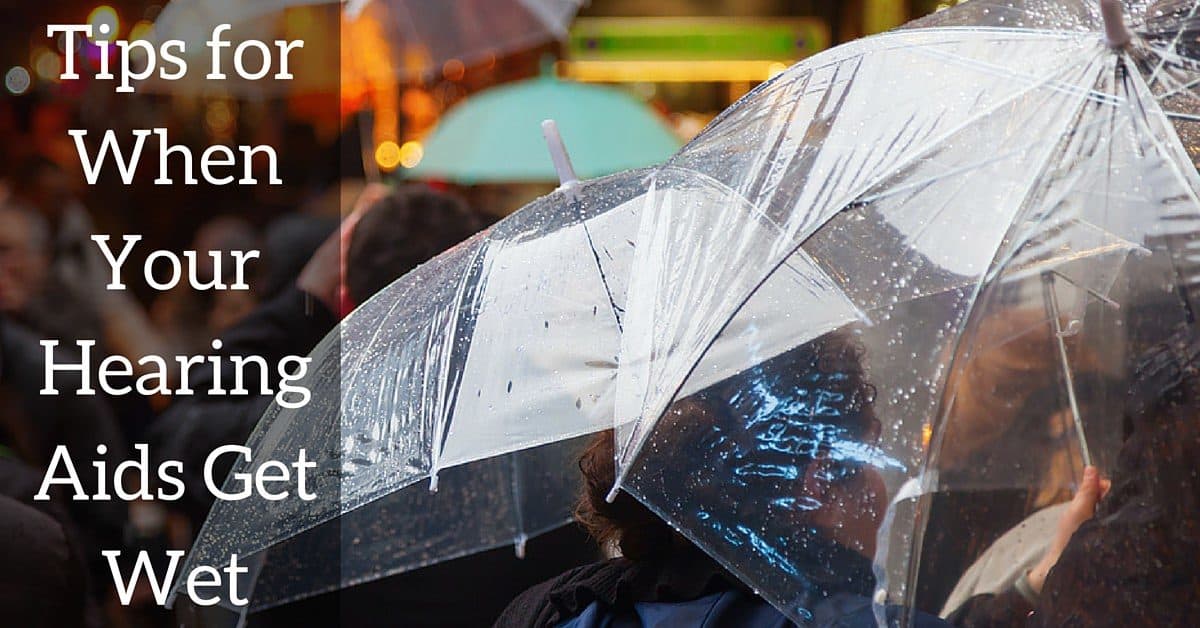Hearing Aid Maintenance Tips: What to Do When Your Hearing Aid Gets Wet
No matter how cautious we are with our hearing aids, sometimes we unexpectedly find ourselves in sticky situations. During the summer months, the likelihood of experiencing possible water damage for our hearing aids is particularly high – most because the chances of perspiration or being near water is higher. Swimming pools, sprinklers and sweating can all be causes for water damage.
It might only take one slip up to find ourselves with non-working hearing aids, but with the right tips and tricks we can avoid having to replace our aids entirely. If your hearing aids get wet, follow these steps to prevent or minimize damage to your aids.
Turn Your Aid Off and Take Out the Battery
Often one of the first things we do when we find our hearing aids malfunctioning after getting wet is to try to turn them back on. However, this can often cause even more damage! The first thing you should do after your hearing aid gets wet is to turn them off and take out the battery.
This prevents water from doing more damage to the inner-workings of your aid. Turning them off means you halt any further damage until you can dry them out. The faster you do this after water damage, the better.
Remove the Tube and Hand Dry
If your hearing aid has a tube, make sure to remove this shortly after removing the battery. With a soft towel or cloth, gently dry your aids by hand. If there is water within the hearing aid or caught somewhere tough to reach with a cloth, gently shake your aid to loosen this moisture. Be sure to do so carefully and not too vigorously, so you don’t cause more damage to the aid.
Dry with a Fan or Hairdryer on Cool
No matter how carefully you hand dry your aid, it’s unlikely that you’ll remove all excess moisture. After drying by hand, it’s a good idea to find a fan or a hair dryer to get to the rest of the moisture likely caught within your aid.
If you use a hair dryer, be sure to use this on a cool setting (never warm or hot), since heat can be even more damaging than moisture for your aid. Hold your aid about a foot from the fan or hair dryer and allow to dry for about five to 10 minutes.
Leave Out to Dry
Even after drying out your aid by hand and with a fan or dryer, there’s no substitute for time and patience. After removing excess moisture as best you can by hand, your second to final step is to allow your aid out to dry.
Open the battery door and set in a cool, dry place for 24 to 48 hours. For even better results, you can try a dehumidifying pot. Avoid putting your aid anywhere near direct sunlight (since this will likely cause your aid to become too hot) or in rice, since residue can cause further damage to your aid.
Clean and Replace the Battery
Once your aid is dry, your final step should be to clean your aid gently to remove any remaining water residue. You will need to replace your battery before turning your aid back on. You might find that your aid is working perfectly, but you also might notice a few malfunctions in its operation. Either way, it’s a good idea to schedule a visit with your hearing aid specialist or audiologist to check your aid and order any needed repairs.
Plus, your hearing aid specialist can even show you tips for how to clean and maintain your aid to prevent future mistakes. Contact our team today for questions about your aid, or how to find the perfect hearing aid for you!


